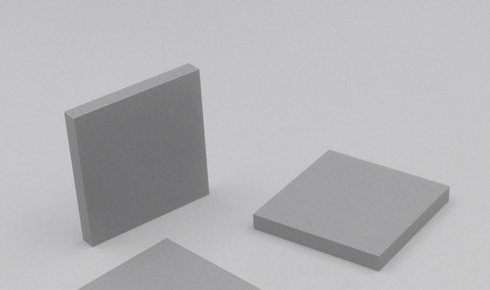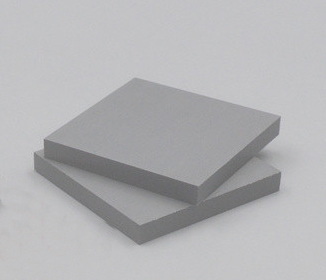Content Menu
● Introduction
● Properties of Boron Carbide
>> High Hardness and Durability
>> Lightweight Characteristics
>> Chemical Resistance and Thermal Stability
● Applications of Boron Carbide Ceramic Plates
>> Use in Military and Defense
>> Industrial Applications
>> Aerospace Applications
● Manufacturing Processes
>> Overview of Production Techniques
● Comparative Analysis
>> Boron Carbide vs. Silicon Carbide
● Market Trends and Suppliers
>> Current Market Demand
>> Key Suppliers and Manufacturers
● Cost Considerations
>> Factors Influencing Pricing
>> Cost-Benefit Analysis
● Future Prospects
>> Innovations in Boron Carbide Technology
>> Potential New Applications
● Conclusion
● Related Questions
>> Q1. What are the main advantages of using boron carbide ceramic plates for armor?
>> Q2. How does boron carbide compare to other armor materials?
>> Q3. What industries utilize boron carbide ceramic plates?
>> Q4. What manufacturing processes are used to produce boron carbide ceramic plates?
>> Q5. What is the future outlook for boron carbide in armor applications?
Introduction
Boron carbide ceramic plates have emerged as a leading choice in the field of advanced armor solutions, thanks to their exceptional properties and versatility. As one of the hardest materials known, boron carbide is widely used in military and industrial applications, providing superior protection against ballistic threats. This article delves into the properties, applications, manufacturing processes, market trends, and future prospects of boron carbide ceramic plates, highlighting why they are considered the ultimate choice for advanced armor solutions.

Properties of Boron Carbide
Boron carbide ceramic plates possess a unique combination of properties that make them ideal for armor applications.
High Hardness and Durability
One of the most notable characteristics of boron carbide is its extreme hardness. It ranks just below diamond on the Mohs scale, making it highly resistant to wear and abrasion. This hardness translates into durability, allowing boron carbide plates to withstand significant impact without compromising their structural integrity.
Lightweight Characteristics
In addition to its hardness, boron carbide is remarkably lightweight compared to other armor materials. This property is crucial in military applications, where reducing the weight of protective gear can enhance mobility and comfort for personnel. The lightweight nature of boron carbide ceramic plates allows for the design of armor that does not hinder movement while still providing robust protection.
Chemical Resistance and Thermal Stability
Boron carbide exhibits excellent chemical resistance, making it suitable for use in harsh environments. It can withstand exposure to various chemicals without degrading, which is essential for applications in industrial settings. Furthermore, boron carbide maintains its structural integrity at high temperatures, making it an ideal choice for applications that involve thermal stress.
Applications of Boron Carbide Ceramic Plates
Boron carbide ceramic plates are utilized in a wide range of applications, primarily in military and industrial sectors.
Use in Military and Defense
In the military, boron carbide ceramic plates are commonly used in personal protective equipment, such as bulletproof vests and armored vehicles. The ability of these plates to absorb and dissipate the energy from ballistic impacts makes them invaluable for protecting soldiers in combat situations. Additionally, boron carbide is used in the construction of armored vehicles, providing enhanced protection against projectiles and shrapnel.
Industrial Applications
Beyond military use, boron carbide ceramic plates find applications in various industrial sectors. They are employed in machinery components, where their hardness and wear resistance contribute to longer service life and reduced maintenance costs. Boron carbide is also used in abrasive materials, such as grinding wheels and cutting tools, due to its ability to cut through tough materials effectively.
Aerospace Applications
The aerospace industry has also recognized the benefits of boron carbide ceramic plates. These plates are used in lightweight armor for aircraft, providing protection without adding significant weight. The combination of strength and lightness is crucial in aerospace applications, where every ounce counts.
Manufacturing Processes
The production of boron carbide ceramic plates involves several advanced manufacturing processes that ensure high quality and performance.
Overview of Production Techniques
Boron carbide ceramic plates are typically produced through methods such as sintering and hot-pressing. Sintering involves heating boron carbide powder to a temperature below its melting point, allowing the particles to bond together and form a solid structure. This process can be enhanced by adding additives that improve the material's properties.
Hot-pressing is another technique used to manufacture boron carbide plates. In this method, boron carbide powder is subjected to high pressure and temperature simultaneously, resulting in a denser and stronger final product. The choice of manufacturing process can significantly influence the performance characteristics of the ceramic plates.

Comparative Analysis
When evaluating armor materials, it is essential to compare boron carbide with other options, such as silicon carbide.
Boron Carbide vs. Silicon Carbide
Both boron carbide and silicon carbide are known for their hardness and durability, but they have distinct differences. Boron carbide is generally harder than silicon carbide, making it more effective at stopping projectiles. However, silicon carbide is often more cost-effective and easier to manufacture, which can make it a more attractive option for certain applications.
In terms of weight, boron carbide has the advantage, as it is lighter than silicon carbide. This property is particularly important in military applications, where reducing weight can enhance mobility. Ultimately, the choice between boron carbide and silicon carbide will depend on the specific requirements of the application, including cost, weight, and performance.
Market Trends and Suppliers
The demand for boron carbide ceramic plates has been steadily increasing, driven by the growing need for advanced armor solutions in various sectors.
Current Market Demand
The military sector remains the largest consumer of boron carbide products, but industrial applications are also on the rise. As industries seek to improve safety and efficiency, the demand for high-performance materials like boron carbide is expected to grow. Additionally, the aerospace industry's focus on lightweight materials is further propelling the market for boron carbide ceramic plates.
Key Suppliers and Manufacturers
Several companies specialize in the production of boron carbide ceramic plates, offering a range of products tailored to different applications. These suppliers are continually innovating to improve the performance and cost-effectiveness of their products, ensuring that boron carbide remains a competitive choice in the armor market.
Cost Considerations
When evaluating boron carbide ceramic plates, it is essential to consider the factors that influence their pricing.
Factors Influencing Pricing
The cost of boron carbide ceramic plates can vary based on several factors, including the manufacturing process, the quality of raw materials, and market demand. High-quality boron carbide plates produced through advanced manufacturing techniques may command a premium price, but they often provide superior performance and durability.
Cost-Benefit Analysis
While boron carbide ceramic plates may have a higher upfront cost compared to other materials, their long-term benefits can outweigh the initial investment. The durability and effectiveness of boron carbide in protecting against ballistic threats can lead to reduced replacement costs and improved safety for personnel, making it a worthwhile investment for military and industrial applications.
Future Prospects
The future of boron carbide ceramic plates looks promising, with ongoing research and development aimed at enhancing their properties and expanding their applications.
Innovations in Boron Carbide Technology
Researchers are exploring new methods to improve the performance of boron carbide, including the development of composite materials that combine boron carbide with other substances. These innovations could lead to even lighter and stronger armor solutions, further solidifying boron carbide's position in the market.
Potential New Applications
As industries continue to evolve, new applications for boron carbide ceramic plates are likely to emerge. The growing focus on safety and protection in various sectors, including construction and transportation, may drive demand for boron carbide products beyond traditional military and industrial uses.
Conclusion
Boron carbide ceramic plates stand out as the ultimate choice for advanced armor solutions due to their exceptional properties, versatility, and growing market demand. Their high hardness, lightweight characteristics, and chemical resistance make them ideal for military, industrial, and aerospace applications. As manufacturing processes continue to improve and new innovations emerge, boron carbide is poised to remain a leading material in the field of armor solutions.

Related Questions
Q1. What are the main advantages of using boron carbide ceramic plates for armor?
Boron carbide ceramic plates offer high hardness, lightweight characteristics, and excellent chemical resistance, making them ideal for protecting against ballistic threats while ensuring mobility.
Q2. How does boron carbide compare to other armor materials?
Boron carbide is generally harder and lighter than many other armor materials, such as silicon carbide, making it a superior choice for applications where weight and performance are critical.
Q3. What industries utilize boron carbide ceramic plates?
Boron carbide ceramic plates are used primarily in the military and defense sectors, but they are also employed in industrial applications, aerospace, and even in some civilian protective gear.
Q4. What manufacturing processes are used to produce boron carbide ceramic plates?
Boron carbide ceramic plates are typically produced through sintering and hot-pressing techniques, which enhance their density and strength.
Q5. What is the future outlook for boron carbide in armor applications?
The future of boron carbide looks promising, with ongoing research aimed at improving its properties and expanding its applications in various industries, driven by the need for advanced safety solutions.
















